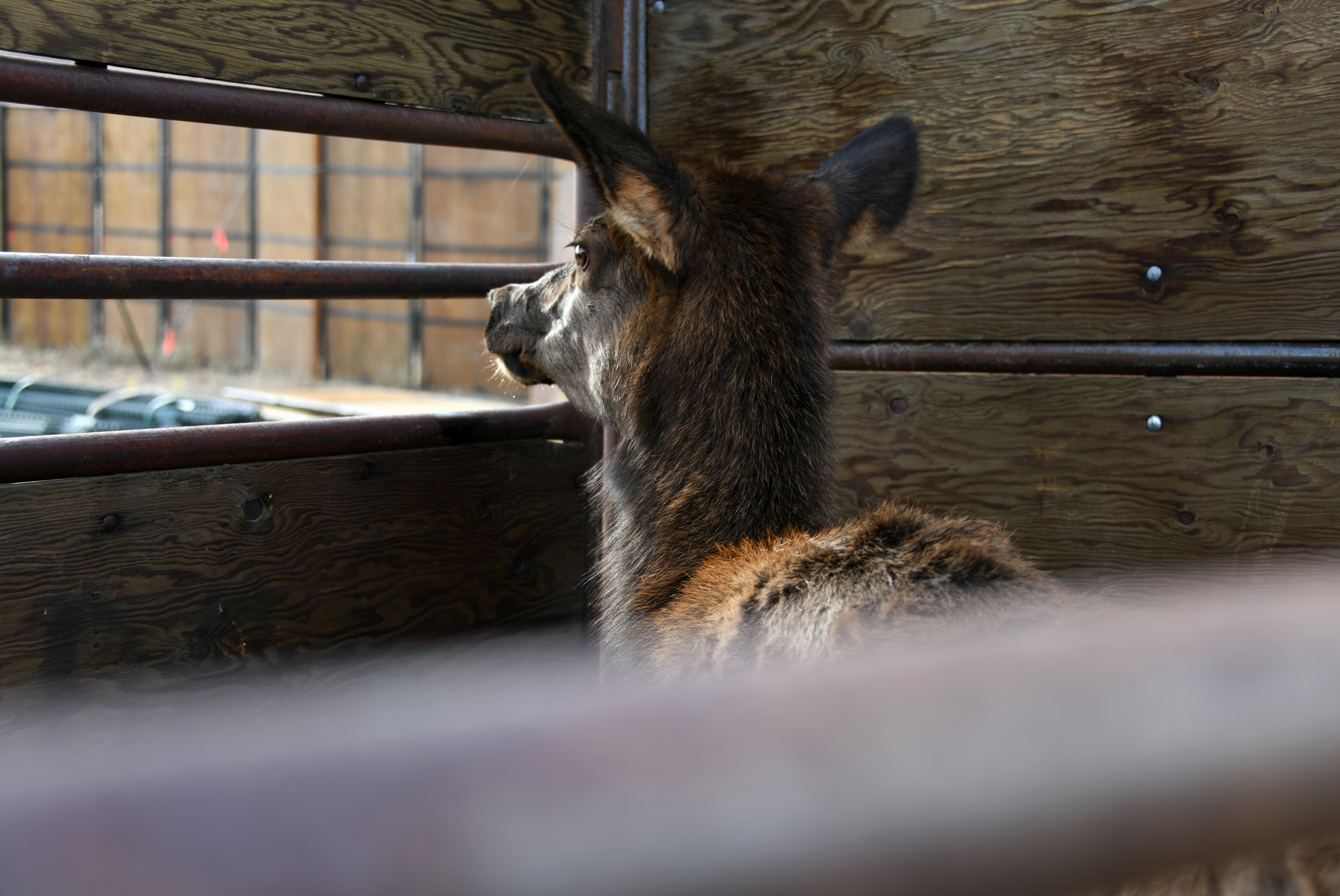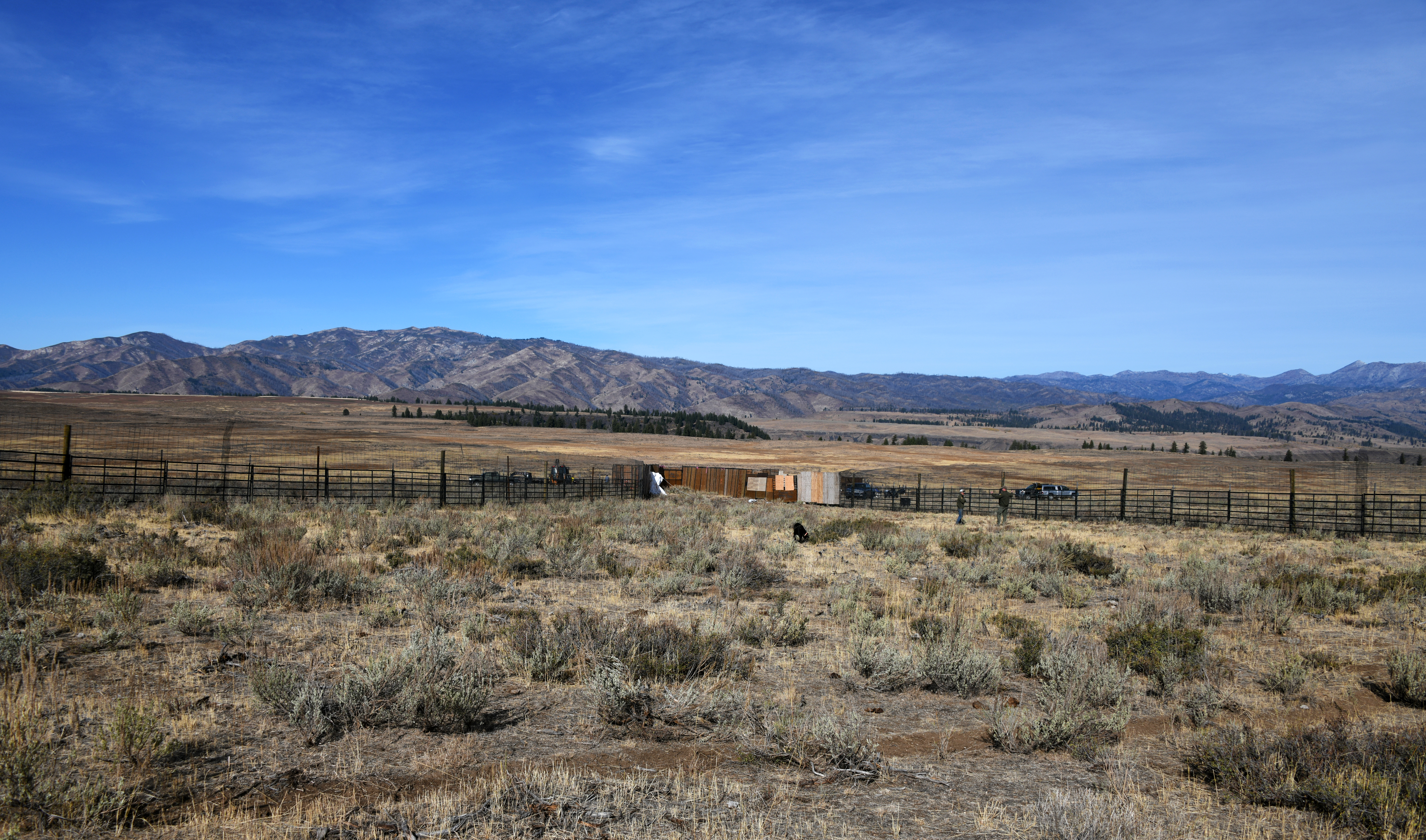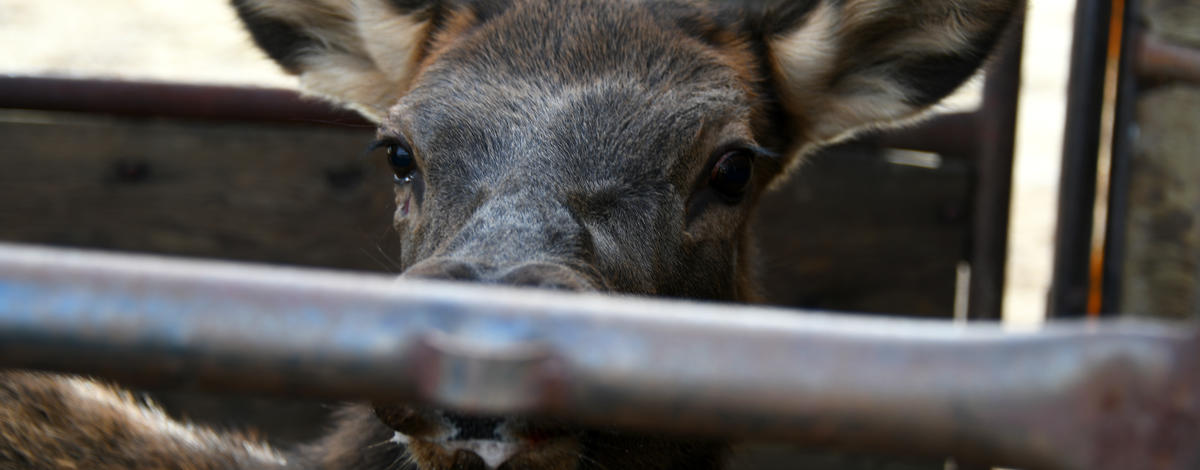Fish and Game staff from the Magic Valley Region will again attempt to trap and translocate elk in the Little Camas region over a two-day period in early May. Trapping efforts are aimed at reducing the size of the elk herd that has a long history of living almost exclusively on private property and depredating on agricultural crops leading to significant and expensive depredation claims.
This same herd of elk was targeted for trapping in the fall of 2020 when 16 elk, cows and calves, were trapped and translocated into central Idaho.

An elk captured in the fall of 2020 in the Little Camas region.
Trapping efforts this year will again use a funnel trap, where very long wings will funnel elk, herded by a helicopter, into small corrals before loading them into a stock trailer for transport.

Elk trap in the Little Camas region.
Elk population numbers continue to be strong in the Magic Valley Region, according to Regional Wildlife Manager Jake Powell, which can bring unintended consequences. “The Magic Valley Region has the highest percentage of private property when compared to the other six Fish and Game regions” according to Powell, “so when coupling the strong elk population with hundreds of thousands of acres of agricultural lands within the Magic Valley Region, it goes to reason that we will continue to see crop depredation issues caused by big game.”
Elk trapping is a rarely used management tool
Efforts to trap and translocate elk responsible for crop depredation is a rare occurrence. In response to hunter input to deal with increasing depredation claims, officials with Fish and Game have developed a variety of management tools to reduce or mitigate the number of elk depredating on agricultural crops. One of those tools is to trap and move elk.
Once trapped, all translocated elk will receive ear tags and some will be outfitted with radio-collars to assess movements and survival in their new central Idaho home. The radio-collars will also help biologists determine if these elk make any effort to return to the Little Camas area.

All captured elk receive ear tags prior to release in central Idaho.
Safety of people and elk
Trapping and translocating elk is both dangerous and stressful on elk. While every effort is made to minimize stress to the captured elk, there is always the possibility that elk that could be injured or die due to capture related activities. Any elk that die during the translocation effort will be immediately field dressed and all meat will be professionally processed and then donated to Idaho Hunters Feeding the Hungry for distribution to area food pantries. No elk were injured or killed during trapping efforts in 2020.
Regional wildlife managers will continue to use hunters when possible to reduce the size of this elk herd.
Department efforts to reduce big game depredation over the last several years were shown to have positive outcomes with less crop damage compared to previous years which have reduced depredation claims. Previous efforts included hazing elk at night when elk were on agricultural fields, using hunters where possible, and sharp shooting at night when the other methods became ineffective or impossible to use.
For additional information, contact the Magic Valley Regional office at (208)324-4359.

